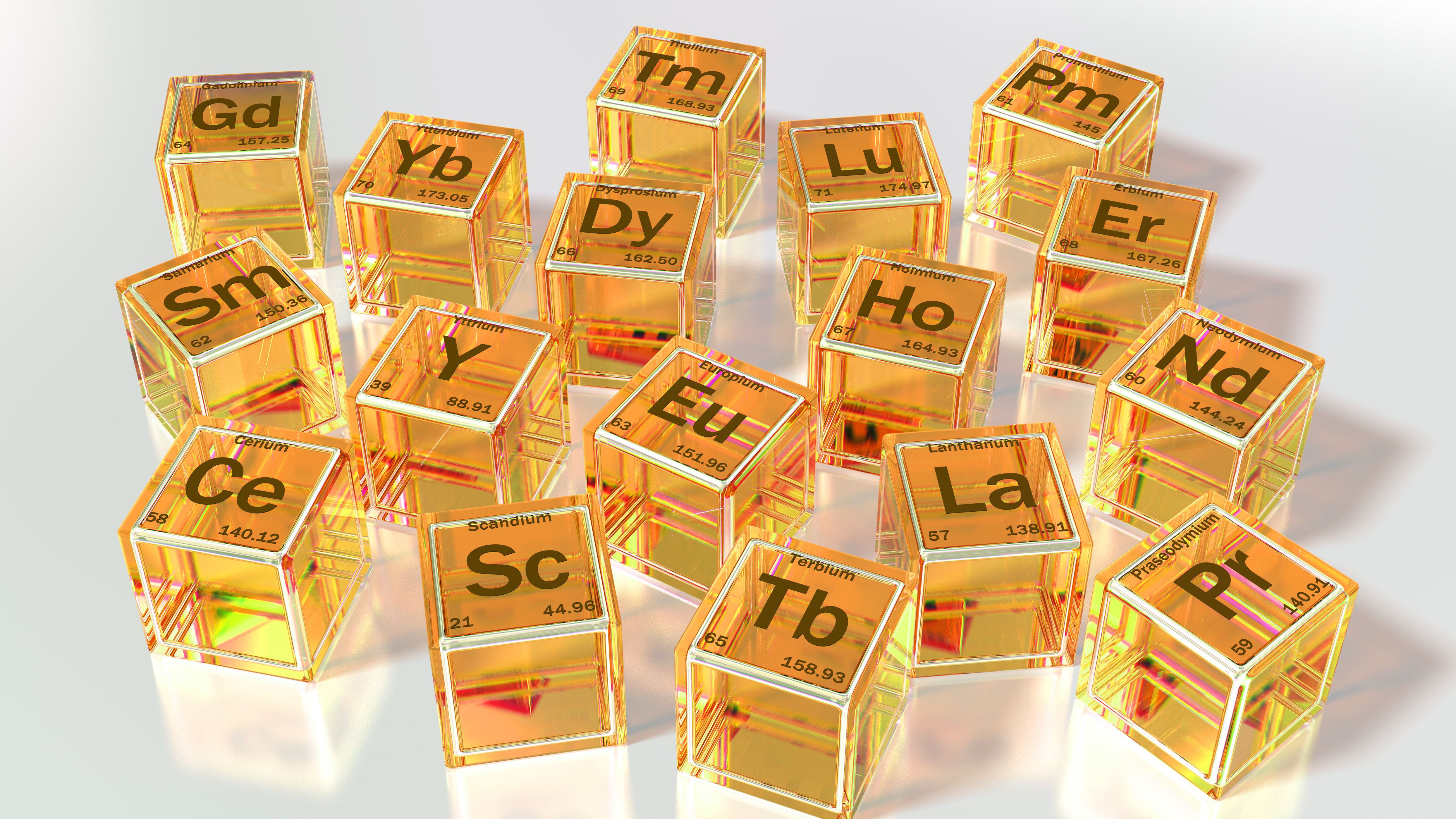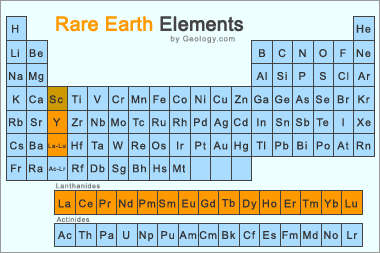
Redazione RHC : 15 November 2025 16:08
We often hear about the so-called “Rare Earths”.
This is a set of seventeen metallic elements. These include the fifteen lanthanides on the periodic table , plus scandium and yttrium . All of these elements are now essential components of many high-tech devices, and given that today’s geopolitics and economics revolve around technology, it’s easy to conclude that one of the most important games of our time will be played out on this front.
While in the past changes have been brought about by major wars or revolutionary changes in political structures, this time not a single shot was fired nor did any government or political system fall.

Table of Elements and Rare Earths
The intense struggle for economic and geopolitical supremacy, struggles such as the race for 5G, big data, artificial intelligence, efforts to eliminate the US dollar as the preferred international currency (bitcoin and cryptocurrencies), crude oil price games, the Wuhan virus—these are all battles being fought on separate fronts, as part of a larger war in a world order completely different from the past.
While these wars are being waged in the open, there is another war, smaller (at the moment), but with the potential for immense economic and strategic impact in the future.
This is “The War for Rare Earths.”
Rare earth metals and alloys containing them are used in many devices people use every day, such as computer memories, DVDs, rechargeable batteries, cell phones, catalytic converters, magnets, fluorescent lights, and much more.
Over the past twenty years, there has been an explosion in demand for many products that require rare earths in their construction. Twenty years ago, very few people owned a cell phone, but today over 5 billion people own a mobile device, and not just one.
The use of rare earth elements in computers has grown almost as fast as cell phones. Many rechargeable batteries are made with rare earth compounds. The demand for batteries is driven by demand for portable electronic devices such as cell phones, music players, laptops, and cameras.
Several pounds of rare earth compounds are in the batteries that power every electric vehicle and hybrid-electric vehicle. As energy independence, climate change, and other issues drive the sale of electric and hybrid vehicles, demand for batteries made with rare earth compounds will grow even faster.
Rare earths are used as catalysts, phosphors, and polishing compounds. These are used for air pollution control, brightening electronic displays, and polishing optical-quality glass. All of these products are expected to experience increased demand.
Rare earth elements (REEs), as discussed at the beginning, are scandium, yttrium, and 15 other elements from the lanthanide metal group. Although they are called “rare earths” (with the exception of promethium, which is unstable), the others are relatively abundant in the Earth’s crust. Even the least abundant rare earth element, thulium, is 100 to 200 times more common than gold.
What makes them “rare earths” is that they are dispersed across the planet. They are found in low concentrations and rarely in sufficient quantities to be used. In fact, once these minerals are acquired, they must be separated from each other. This is done using chemical processes, which has a huge ecological impact on the entire planet.
The shift to electric vehicles and increased reliance on renewable energy is increasing competition for rare earths. These are critical to the production of everything from cell phones to electric car batteries and wind turbines. The only question is how the rest of the world outside of China, and particularly the United States, will address the impending competition for rare earths.
Indeed, when it comes to post-extraction industrial processes, China currently dominates. Almost all producers depend on Beijing for post-extraction processing.
Rare earth mining is one of the most environmentally destructive and toxic of any mining practice. It is difficult to extract and process rare earths without harming the environment. The problems are related to the two primary extraction methods.
The first involves removing the topsoil, transporting it to a leaching pond, and adding chemicals (such as ammonium sulfate and ammonium chloride) to separate the metals. The chemicals used in this separation process can create air pollution, cause erosion, and leach into groundwater.
The second processing method involves drilling holes into the ground, inserting PVC and rubber pipes, and pumping in chemicals to remove the soil. The resulting slurry is then pumped into leaching ponds to separate the rare earth metals. This method creates the same problems as removing topsoil, with the addition of PVC pipes, rubber pipes, and other materials used by mining crews that remain scattered throughout the mines. Abandoned mines pose ongoing environmental risks. Residual chemicals can continue to leach into groundwater.
In addition to being the world’s largest producer of rare earth materials, China is also its dominant consumer. They use rare earths primarily in the production of electronic products for domestic and export markets. Japan and the United States are the second and third largest consumers of rare earths.
Rare earth metal mining takes place primarily in southeast China, in provinces such as Jiangxi and Fujian. However, mining operations also occur in the north, such as Inner Mongolia, and in the west, such as Sichuan. Over the past decade and a half, China has also moved to obtain exclusive mining rights in African countries in exchange for the construction of major infrastructure projects. Agreements have been signed in the Democratic Republic of Congo and Kenya, where China agreed to provide $666 million for a data center and a highway.
Australia began producing rare earth oxides in 2011. By 2012 and 2013, they were supplying about 2% to 3% of global production. The Mountain Pass mine returned to production in 2012, and the United States produced about 4% of the world’s rare earth elements in 2013. Production in Brazil, Malaysia, Russia, Thailand, and Vietnam has continued or increased.
New mineral resource assessments conducted by the United States Geological Survey have identified significant resources outside of China. Although China is the world leader in rare earth production, it controls only about 36% of global reserves. This offers other countries the opportunity to become major producers now that China is no longer selling rare earths below production cost.
 Redazione
Redazione